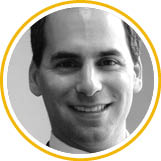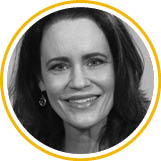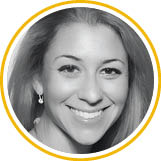
William B. Trattler, MD
As residents and fellows, we learn from our faculty, mentors, and peers, and we typically finish training with established practice patterns in place. Whether related to the frequency with which we see controlled glaucoma patients or the timing of postoperative visits after routine cataract surgery, our preferred patient visit pattern is often influenced by what we learned in training.
Once in practice, however, our experiences may lead us to change these patterns. One significant change I made was switching to same-day postoperative visits. Because our surgery center is in the same building as our office, my patients appreciate the convenience of a same-day postoperative visit, rather having to drive back the next day. In making this change, I also noted that a small but significant percentage of patients had elevated IOP, which I could instantly identify and treat. Abnormally low IOP could be identified and treated as well. Thus, I concluded that same-day postoperative visits were beneficial for my surgical patients.
However, one of my partners in my practice, who is not a fan of change and is not open-minded, felt that same-day postoperative visits were not standard of care. Rather than speak with me and find out more, he went directly to our insurance carrier. He suggested to them that I was an outlier and that same-day postoperative visits would fail to detect important clinical information available on postoperative day 1. He requested a determination to see whether same-day visits should be allowed and maintained that, if not, I should be instructed to halt these visits and switch to a more standard postoperative visit schedule. Fortunately, I was able to provide enough evidence to the insurance carrier to support same-day postoperative visits, which allows my patients to continue to receive this benefit.

Laura M. Periman, MD
During recent years, we have dramatically expanded the treatment modalities available for dry eye disease (DED). The science is exciting indeed, yet the art remains in patient selection and customizing care for each individual patient.
Despite these significant advances, we still have patients who are not sufficiently improved after extensive DED treatment interventions. I believe that DED is about 2 dozen different diagnoses under one misleading label. For this reason, I remain as open-minded as possible in search of more science and more art for addressing unmet patient needs.

Alanna Nattis, DO, FAAO
Building a private practice is a daunting task in many ways. As those who have embarked on this pursuit are aware, we must depend on our training, mentors, and past experiences in order to mold our desired careers and professional activities. Fortunately, I have had awesome mentors during my residency, fellowship, and life (my dad!) to help facilitate this process.
Introducing clinical research into our practice has been an additional challenging and enlightening (but ultimately fulfilling) experience. Initially, many of my co-physicians were not interested in participating in research, and our staff was not familiar with its integration into clinical practice. Therefore, implementation of a clinical research program required a great deal of staff education. It also required me to understand our staff’s perspectives on research. Before integration, many of our staff members believed that research was boring, involved only lab work, and meant additional work and paperwork. It was important for me to hear their concerns about integrating research into our daily routine(s).
After several meetings and educational efforts designed to communicate the amazing opportunities clinical research could offer not only our patients but also our staff and family members, clinical research has become an exciting endeavor for our practice. Now, most of our staff feels proud to offer this special clinical research program. Their enthusiasm has facilitated its successful integration, implementation, and growth, and we are excited to see what new technologies and innovations we will be able to offer patients in the near and distant future.
The launch of any new practice initiative requires teamwork and understanding. Without open communication and consideration of the thoughts and beliefs of others, success is not possible.





